
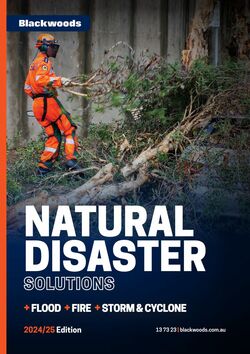
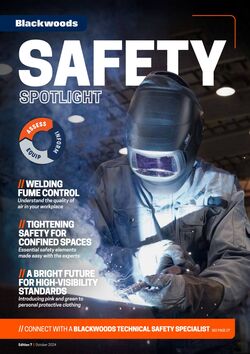
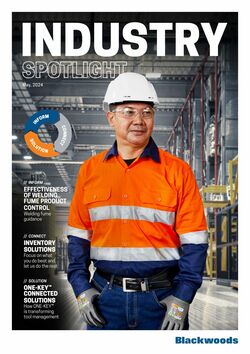
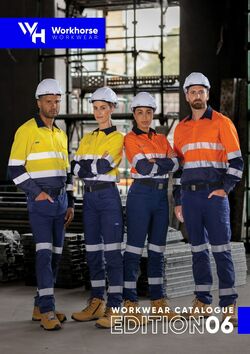
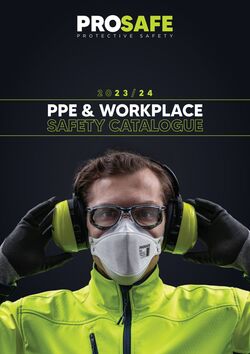
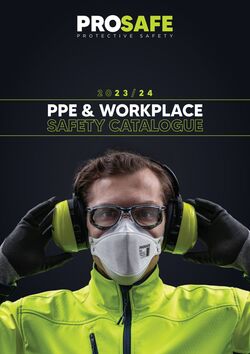
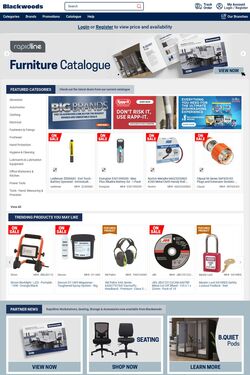
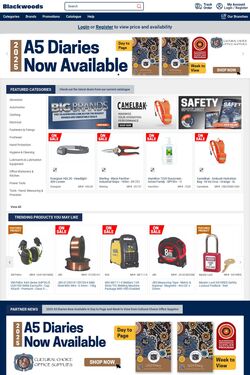
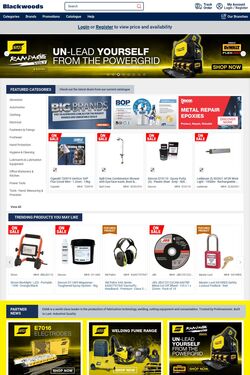

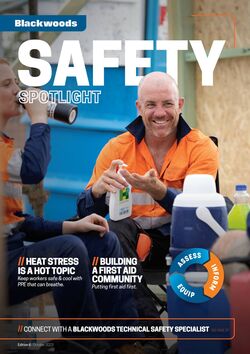
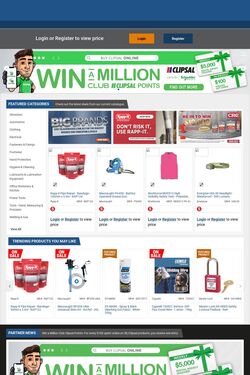
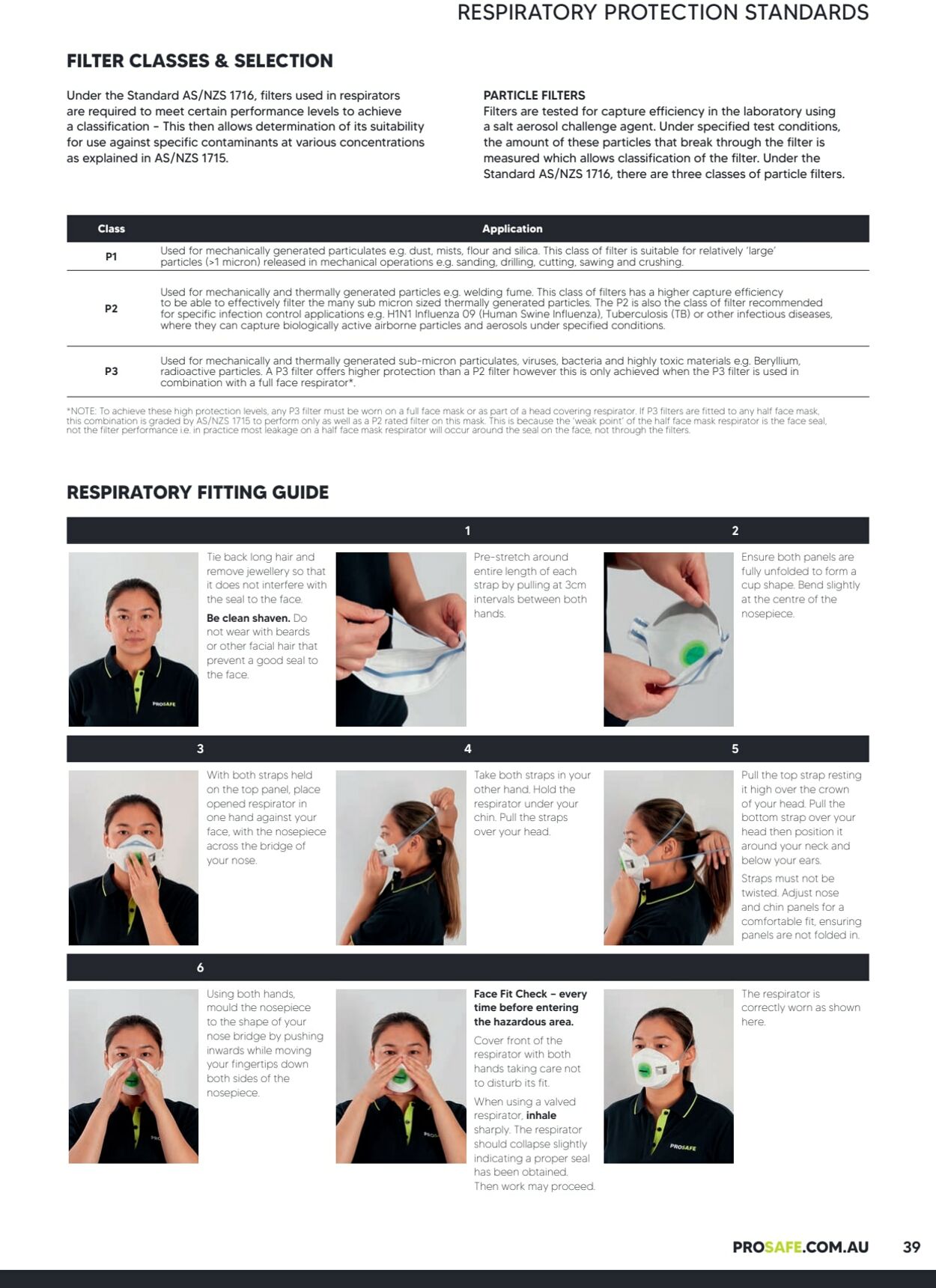
Products in this catalogue
RESPIRATORY PROTECTION STANDARDS FILTER CLASSES & SELECTION Under the Standard AS/NZS 1716, filters used in respirators PARTICLE FILTERS are required to meet certain performance levels to achieve Filters are tested for capture efficiency in the laboratory using a classification - This then allows determination of its suitability a salt aerosol challenge agent. Under specified test conditions, for use against specific contaminants at various concentrations the amount of these particles that break through the filter is as explained in AS/NZS 1715. measured which allows classification of the filter. Under the Standard AS/NZS 1716, there are three classes of particle filters. cor Ey PI Used for m ically generated particulates ts, flour and silica. This class of filter is suitable latively ‘large particles (>1 micron) released in mechanical oper sanding, drilling, cutting, and crushing Used for mechanically and thermally generated particles e.g. welding fume. This class of filters has a higher to be able to effectively filter the many sub micron sized thermally generated particles, The P2 is also the class of filter recommended for specific infection control applications e.g. H1N1 Influenza 09 (Human Swine Influenza), Tuberculosis (TB) or other infectious diseases, where they can capture biologically active airborne particles and aerosols under specified conditions. Used for mechar a y generated sub-micron particulates, viruses, bacteria and highly toxic r 29. Berylium P3 radioactive é nigher protection than a P2 filter however this is only achieved when t RESPIRATORY FITTING GUIDE Face Fit Check - every time before entering rrécily worn soshowt the hazardous area. e respirator inhale PROSAFE.COM.AU 39
| Name | Details |
|---|